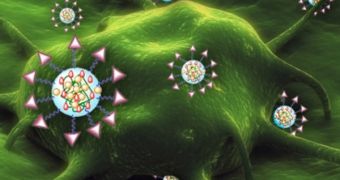In a groundbreaking achievement that could potentially help save many lives, a group of researchers in the United States have developed a nanoparticle that can deliver two or more drugs to a single tumors.
When cancer patients are treated for their condition, they are regularly given several drugs rather than a single one. This approach has been shown to be the most effective in many studies.
Yet, creating the perfect drug cocktail is a very difficult job for doctors. Getting them to the actual tumor site is however even more complex.
Using nanoparticles for this particular job is nothing new. Experts have been trying to harness the power of the nanoscale for many years, at times with incredible results.
So researchers at the Massachusetts Institute of Technology (MIT) and Brigham and Women’s Hospital decided to try and combine the two approaches, in a type of therapy with great potential.
The joint team therefore created a type of nanoparticle that can be used to transport two or more drugs in a specific concentration to prostate cancer cells.
Details of this incredible particle are published in this week's issue of the esteemed journal Proceedings of the National Academy of Sciences (PNAS).
For the purpose of the investigation, the research team tailored the nanoparticles so that it transported the drugs cisplatin and docetaxel, which are commonly used against many types of cancers.
According to the researchers, it could be that this approach to treating cancer would diminish the negative side-effects of chemotherapy, which tends to also kill healthy cells around tumors.
By targeting the nanoscale structures specifically at cells that are cancerous, collateral damage is kept at a minimum level, the group believes.
Conceivably, this approach could be used for conditions other than cancer as well, which at this point require the administration of combined medication.
At this point, the researchers are conducting animal experiments, in a bid to determine the exact degree of effectiveness that the new nanoparticles have.
These studies may take several years. After they are complete, the team will push for the beginning of human trials, and will then apply for FDA approval for their drug.
The team has already filed for a patent on the polymer-blending fabrication technique that produces the nanoparticles used as transport vehicles.

 14 DAY TRIAL //
14 DAY TRIAL //